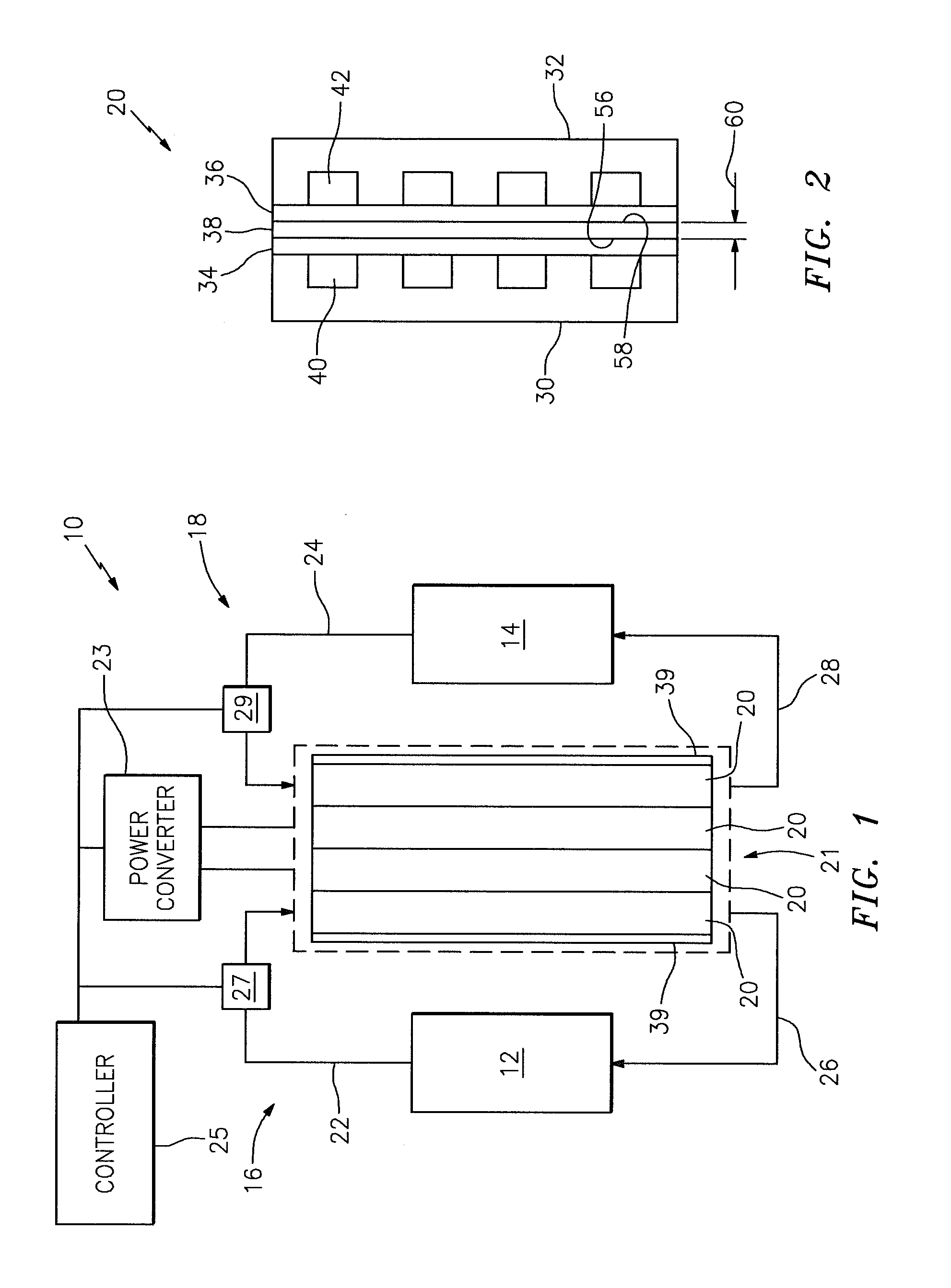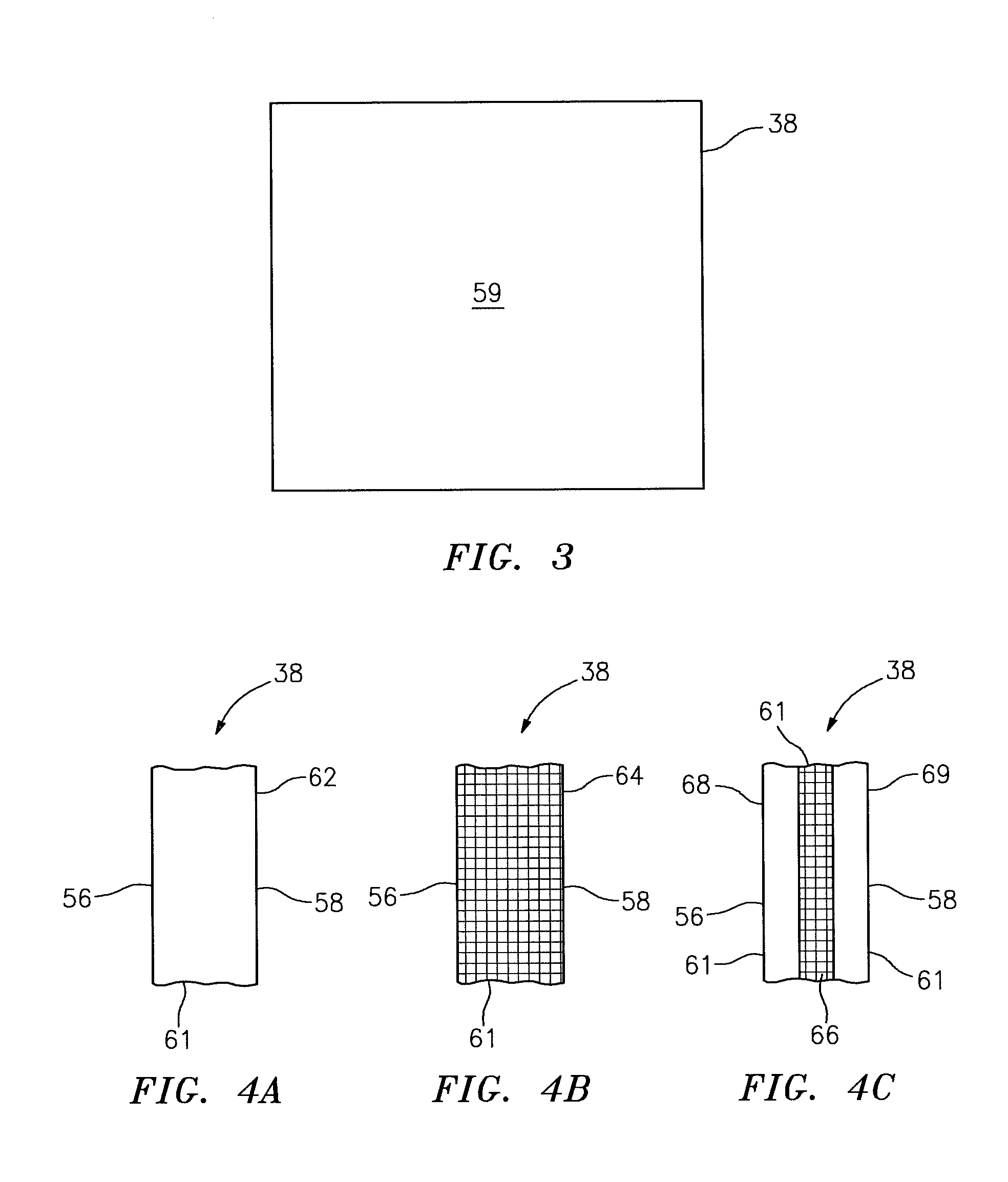Flow battery having a low resistance membrane
a flow battery and membrane technology, applied in the direction of secondary cell details, non-aqueous electrolyte cells, indirect fuel cells, etc., can solve the problem of reducing the overall energy efficiency of the flow battery system
- Summary
- Abstract
- Description
- Claims
- Application Information
AI Technical Summary
Problems solved by technology
Method used
Image
Examples
Embodiment Construction
[0013]Referring to FIG. 1, a schematic diagram of a flow battery system 10 is shown. The flow battery system 10 is configured to selectively store and discharge electrical energy. By “store” it is meant that electrical energy is converted into a storable form that can later be converted back into electrical energy and discharged. During operation, for example, the flow battery system 10 can convert electrical energy generated by a renewable or non-renewable power system (not shown) into chemical energy, which is stored within a pair of first and second electrolyte solutions (e.g., anolyte and catholyte solutions). The flow battery system 10 can later convert the stored chemical energy back into electrical energy. Examples of suitable first and second electrolyte solutions include vanadium / vanadium electrolyte solutions, or any other pair of anolyte and catholyte solutions of substantially similar redox species. The pair of first and second electrolyte solutions, however, is not limi...
PUM
| Property | Measurement | Unit |
|---|---|---|
| thickness | aaaaa | aaaaa |
| thick | aaaaa | aaaaa |
| current densities | aaaaa | aaaaa |
Abstract
Description
Claims
Application Information
 Login to View More
Login to View More - R&D
- Intellectual Property
- Life Sciences
- Materials
- Tech Scout
- Unparalleled Data Quality
- Higher Quality Content
- 60% Fewer Hallucinations
Browse by: Latest US Patents, China's latest patents, Technical Efficacy Thesaurus, Application Domain, Technology Topic, Popular Technical Reports.
© 2025 PatSnap. All rights reserved.Legal|Privacy policy|Modern Slavery Act Transparency Statement|Sitemap|About US| Contact US: help@patsnap.com



